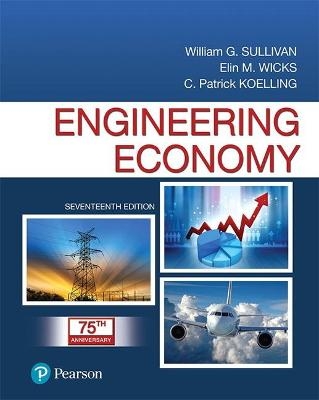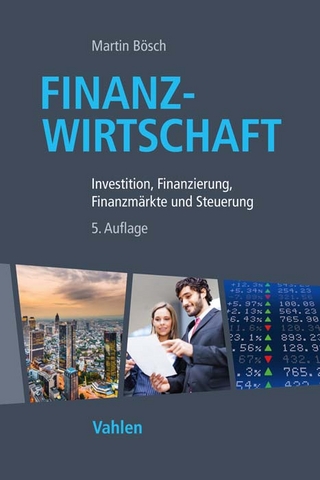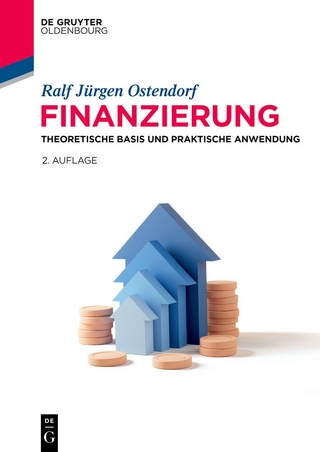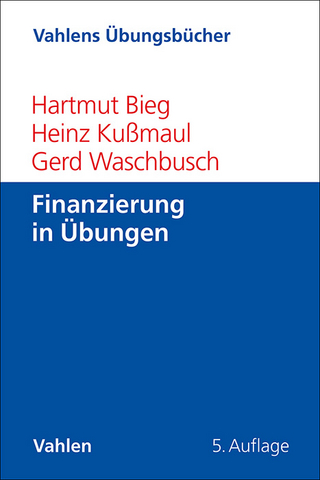
Engineering Economy
Pearson (Verlag)
978-0-13-487006-9 (ISBN)
- Titel erscheint in neuer Auflage
- Artikel merken
Understand the importance of engineering economics principles and how to make smart economic choices
Used by engineering students worldwide, this bestselling text provides a sound understanding of the principles, basic concepts, and methodology of engineering economy. Explanations and examples that are student-centered and practical in real-life situations help students develop prociency in the methods and processes for making rational decisions. Built upon the rich and time-tested teaching materials of earlier editions, the text is extensively revised and updated to reflect current trends and issues. The new edition captures the spirit of environmental sustainability with more than 160 “green” problems, as well as new end-of-chapter problems and group exercises, and includes updates to the new 2017 Federal Tax code revisions.
Also available with MyLab Engineering
MyLab™ is the teaching and learning platform that empowers you to reach every student. By combining trusted author content with digital tools and a flexible platform, MyLab personalizes the learning experience and improves results for each student.Instructors can choose from a large number of homework and practice questions that are correlated to the textbook, many of which regenerate algorithmically to give students unlimited opportunity for practice and mastery.
Note: You are purchasing a standalone product; MyLab Engineering does not come packaged with this content. Students, if interested in purchasing this title with MyLab Engineering, ask your instructor for the correct package ISBN and Course ID. Instructors, contact your Pearson representative for more information.
If you would like to purchase both the physical text and MyLab Engineering, search for:
0134873203 / 9780134873206 Engineering Economy Plus MyLab Engineering with Pearson eText -- Access Card Package
Package consists of:
0134831675 / 9780134831671 MyLab Engineering with Pearson eText -- Access Card -- for Engineering Economy
0134870069 / 9780134870069 Engineering Economy
About our authors Dr. William G. Sullivan earned his PhD from the Georgia Institute of Technology in Industrial and Systems Engineering. He has made enduring contributions to the field of engineering economy education in his more than 40 years of service to industry and the academy. A tireless lecturer, he has taught engineering economy to more than 10,000 students at five major universities (Georgia Tech, University of Tennessee, North Carolina State University, Arizona State University and Virginia Tech). Dr. Sullivan's textbooks in the field (five in total), including “Engineering Economy“ (17th edition) continue to contribute to the education of thousands of students. He also has extensive consulting experience with 25 firms in the US. Elin M. Wicks is the owner of Abacus Accounting LLC, an accounting and bookkeeping company focused on empowering small business owners to achieve financial success. She earned a BS and MS in Industrial Engineering from Rutgers University, where her masters research focused on a method of quantifying non-economic factors in monetary terms. During this time, she also developed software tools to assist Cosmair Inc. in improving scheduling and labor recording practices. She went on to earn her PhD in Industrial and Systems Engineering from Virginia Tech, focusing on the design of cellular manufacturing systems. She then joined the faculty of the University of Missouri, Columbia in the Industrial and Manufacturing Systems Department. After taking some time off to raise her children, she supplemented her education in the field of accounting and became the Senior Accountant of Glenn B. Cohen, CPA, an accounting and financial management firm. She has been an author of Engineering Economy since the publication of the 10th edition. Patrick Koelling has served on the faculty in industrial and systems engineering at Virginia Tech since 1987. Dr. Koelling received his PhD in Industrial and Management Systems Engineering in 1982 from Arizona State University, an MBA in 1978, M.S.I.E. in 1977 and B.S.I.E. in 1976, all from the University of Missouri. He conducts research and teaches in operations research and management systems engineering. Prior to joining Virginia Tech, he spent two years at Hallmark Cards as a senior analyst and three years as an assistant professor at Oklahoma State University. Dr. Koelling has also served as department head of industrial engineering and management at Oklahoma State. Dr. Koelling has consulted with several private and government organizations, including the establishment of new industrial and systems engineering programs. He is a Fellow of the Institute of Industrial and Systems Engineers, Executive Director of Alpha Pi Mu, the industrial engineering honor society and Director of Accreditation Affairs for the Institute of Industrial and Systems Engineers.
Green Content
CHAPTER 1
Introduction to Engineering Economy
1.1 Introduction
1.2 The Principles of Engineering Economy
1.3 Engineering Economy and the Design Process
1.4 Using Spreadsheets in Engineering Economic Analysis
1.5 Try Your Skills
1.6 Summary
CHAPTER 2
Cost Concepts and Design Economics
2.1 Cost Terminology
2.2 The General Economic Environment
2.3 Cost-Driven Design Optimization
2.4 Present Economy Studies
2.5 Case Study–The Economics of Daytime Running Lights
2.6 In Class Exercise
2.7 Try Your Skills
2.8 Summary
Appendix 2-A Accounting Fundamentals
CHAPTER 3
Cost-Estimation Techniques
3.1 Introduction
3.2 An Integrated Approach
3.3 Selected Estimating Techniques (Models)
3.4 Parametric Cost Estimating
3.5 Case Study–Demanufacturing of Computers
3.6 Electronic Spreadsheet Modeling: Learning Curve
3.7 In-Class Exercise
3.8 Try Your Skills
3.9 Summary
CHAPTER 4
The Time Value of Money
4.1 Introduction
4.2 Simple Interest
4.3 Compound Interest
4.4 The Concept of Equivalence
4.5 Notation and Cash-Flow Diagrams and Tables
4.6 Relating Present and Future Equivalent Values
4.7 Relating a Uniform Series (Annuity) to Its Present and Future Equivalent
4.8 Summary of Interest Formulas and Relationships for Discrete Compounding
4.9 Deferred Annuities (Uniform Series)
4.10 Equivalence Calculations Involving Multiple Interest Formulas
4.11 Uniform (Arithmetic) Gradient of Cash Flows
4.12 Geometric Sequences of Cash Flows
4.13 Interest Rates that Vary with Time
4.14 Nominal and Effective Interest Rates
4.15 Compounding More Often than Once per Year
4.16 Interest Formulas for Continuous Compounding and Discrete Cash Flows
4.17 Case Study–Understanding Economic “Equivalence”
4.18 In-Class Exercise
4.19 Try Your Skills
4.20 Summary
CHAPTER 5
Evaluating a Single Project
5.1 Introduction
5.2 Determining the Minimum Attractive Rate of Return (MARR)
5.3 The Present Worth Method
5.4 The Future Worth Method
5.5 The Annual Worth Method
5.6 The Internal Rate of Return Method
5.7 The External Rate of Return Method
5.8 The Payback (Payout) Period Method
5.9 Case Study–A Proposed Capital Investment to Improve Process Yield
5.10 Electronic Spreadsheet Modeling: Payback Period Method
5.11 In-Class Exercise
5.12 Try Your Skills
5.13 Summary
Appendix 5-A The Multiple Rate of Return Problem with the IRR Method
CHAPTER 6
Comparison and Selection among Alternatives
6.1 Introduction
6.2 Basic Concepts for Comparing Alternatives
6.3 The Study (Analysis) Period
6.4 Useful Lives Are Equal to the Study Period
6.5 Useful Lives Are Unequal among the Alternatives
6.6 Personal Finances
6.7 Case Study–Ned and Larry’s Ice Cream Company
6.8 Postevaluation of Results
6.9 Project Postevaluation Spreadsheet Approach
6.10 In-Class Exercise
6.11 Try Your Skills
6.12 Summary
CHAPTER 7
Depreciation and Income Taxes
7.1 Introduction
7.2 Depreciation Concepts and Terminology
7.3 The Classical (Historical) Depreciation Methods
7.4 The Modified Accelerated Cost Recovery System
7.5 A Comprehensive Depreciation Example
7.6 Introduction to Income Taxes
7.7 The Effective Corporate Income Tax Rate
7.8 Gain (Loss) on the Disposal of an Asset
7.9 General Procedure for Making After-Tax Economic Analyses
7.10 Illustration of Computations of ATCFs
7.11 Economic Value Added
7.12 In-Class Exercise
7.13 Try Your Skills
7.14 Summary
CHAPTER 8
Price Changes and Exchange Rates
8.1 Introduction
8.2 Terminology and Basic Concepts
8.3 Fixed and Responsive Annuities
8.4 Differential Price Changes
8.5 Spreadsheet Application
8.6 Foreign Exchange Rates and Purchasing Power Concepts
8.7 Case Study–Selecting Electric Motors to Power an Assembly Line
8.8 In-Class Exercise
8.9 Try Your Skills
8.10 Summary 394of Single Cash Flows
CHAPTER 9
Replacement Analysis
9.1 Introduction
9.2 Reasons for Replacement Analysis
9.3 Factors that Must Be Considered in Replacement Studies
9.4 Typical Replacement Problems
9.5 Determining the Economic Life of a New Asset (Challenger)
9.6 Determining the Economic Life of a Defender
9.7 Comparisons in Which the Defender’s Useful Life Differs from that of the Challenger
9.8 Retirement without Replacement (Abandonment)
9.9 After-Tax Replacement Studies
9.10 Case Study–Replacement of a Hospital’s Emergency Electrical Supply System
9.11 Try Your Skills
9.12 Summary
CHAPTER 10
Evaluating Projects with the Benefit−Cost Ratio Method
10.1 Introduction
10.2 Perspective and Terminology for Analyzing Public Projects
10.3 Self-Liquidating Projects
10.4 Multiple-Purpose Projects
10.5 Difficulties in Evaluating Public-Sector Projects
10.6 What Interest Rate Should Be Used for Public Projects?
10.7 The Benefit−Cost Ratio Method
10.8 Evaluating Independent Projects by B−C Ratios
10.9 Comparison of Mutually Exclusive Projects by B−C Ratios
10.10 Case Study–Improving a Railroad Crossing
10.11 Try Your Skills
10.12 Summary
CHAPTER 11
Breakeven and Sensitivity Analysis
11.1 Introduction
11.2 Breakeven Analysis
11.3 Sensitivity Analysis
11.4 Multiple Factor Sensitivity Analysis
11.5 Try Your Skills
11.6 Summary
CHAPTER 12
Probabilistic Risk Analysis
12.1 Introduction
12.2 Sources of Uncertainty
12.3 The Distribution of Random Variables
12.4 Evaluation of Projects with Discrete Random Variables
12.5 Evaluation of Projects with Continuous Random Variables
12.6 Evaluation of Risk and Uncertainty by Monte Carlo Simulation
12.7 Performing Monte Carlo Simulation with a Computer
12.8 Decision Trees
12.9 Real Options Analysis
12.10 Summary
CHAPTER 13
The Capital Budgeting Process
13.1 Introduction
13.2 Debt Capital
13.3 Equity Capital
13.4 The Weighted Average Cost of Capital (WACC)
13.5 Project Selection
13.6 Postmortem Review
13.7 Budgeting of Capital Investments and Management Perspective
13.8 Leasing Decisions
13.9 Capital Allocation
13.10 Summary
CHAPTER 14
Decision Making Considering Multiattributes
14.1 Introduction
14.2 Examples of Multiattribute Decisions
14.3 Choice of Attributes
14.4 Selection of a Measurement Scale
14.5 Dimensionality of the Problem
14.6 Noncompensatory Models
14.7 Compensatory Models
14.8 Summary
APPENDICES
A. Using Excel to Solve Engineering Economy Problems
B. Abbreviations and Notation
C. Interest and Annuity Tables for Discrete Compounding
D. Interest and Annuity Tables for Continuous Compounding
E. Standard Normal Distribution
F. Selected References
G. Solutions to Try Your Skills
H. Answers to Selected Problems
| Erscheinungsdatum | 25.04.2018 |
|---|---|
| Sprache | englisch |
| Maße | 191 x 234 mm |
| Gewicht | 1166 g |
| Themenwelt | Technik |
| Wirtschaft ► Betriebswirtschaft / Management ► Finanzierung | |
| Wirtschaft ► Volkswirtschaftslehre | |
| ISBN-10 | 0-13-487006-9 / 0134870069 |
| ISBN-13 | 978-0-13-487006-9 / 9780134870069 |
| Zustand | Neuware |
| Haben Sie eine Frage zum Produkt? |
aus dem Bereich


